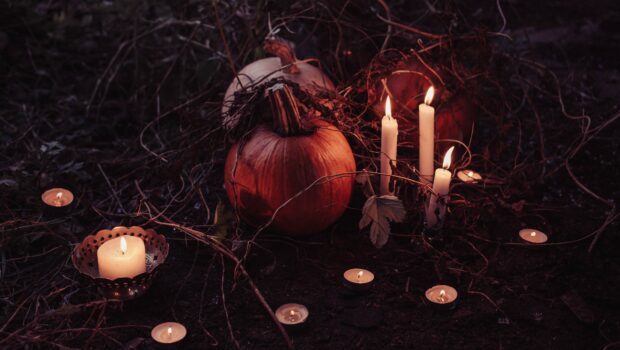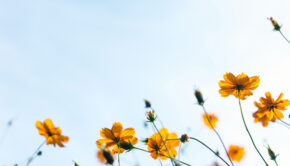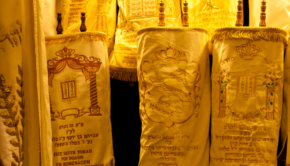Halloween and the High Holidays?
We are now approaching Halloween, and I’m reflecting on the connection between this fun, but pretty trivialized and commercialized secular American holiday and the Jewish High Holidays that we just finished celebrating.
This year the High Holidays arrived late in the secular calendar. We were safely into October before Yom Kippur arrived so as I walked my dog on the days around Yom Kippur I saw all the Halloween decorations that people put up as soon as October arrives. Skeletons, ghosts, gravestones and spider webs all of a sudden appeared throughout the neighborhood.
It got me thinking about the connection between them: Halloween, after all, has its root in the earlier All Hallows Eve, and that has its roots in even earlier European fall festivals honoring the dead.
Yom Kippur is also a day when we fast and confess, wear white and no leather shoes, all to cut back just a bit on our life force and remind us of our mortality. As we pray to be “written and sealed in the Book of Life” we acknowledge in these Days of Awe that we are always standing on the edge of both life and death and both are realities in our world.
This acknowledging of death is natural for the fall season. It’s the time, in the Northern hemisphere, when the leaves are falling and the summer flowers and gardens are dying and turning brown. It can be depressing, but we also know that the seeds of new life are being planted with every falling apple, acorn, and kernel of corn (here in New England, where I live, anyway). I go out into the garden this time of year and plant my garlic a few inches deep so it can break through the surface in the spring and be ready to dry and then eat by next July.
So we’re holding a paradox, keeping ourselves aware that life isn’t about cutting away the dark and only living in the light—and that brings us to a kind of wholeness. Parker Palmer writes about fall and its paradoxes:
“…in a culture that prefers the ease of either/or thinking to the complexities of paradox, we have a hard time holding opposites together. We want light without darkness, the glories of spring and summer without the demands of autumn and winter… Split off from each other, neither darkness nor light is fit for human habitation. But if we allow the paradox of darkness and light to be, the two will conspire to bring wholeness and health to every living thing.”
So, for all its trivializing and commercializing appearances, this year I’ve been able to see a deeper, more important side to all these Halloween decorations—somewhere deep down, they are reminding us of the wisdom of the seasons: hold onto the paradox. When we drill down past the plastic decorations, it’s rooted in the same impulse as our High Holidays. In order to really love life, we can’t hide from death. In order to appreciate the light, we need darkness. On Succot we sat together in partly open and partly closed temporary dwellings to remind ourselves that happiness comes together with vulnerability. In our culture that wants to separate and isolate, we are reminded that health and wholeness, hallows and holy days, are about holding everything together.
-Rabbi Natan Margalit, Ph.D.
You can continue exploring these themes of separation versus coming together and isolation versus wholeness with Rabbi Natan’s new book: “The Pearl and the Flame.”
Woven through with stories of the author’s journey from a secular upbringing in Honolulu to Orthodox Judaism in Jerusalem, and back to his own spiritual path, The Pearl and the Flame brings a new integration of ecological thinking and core Jewish concepts. This new integration puts Judaism at the forefront of our struggles against current crises such as climate change, the culture of addiction, and social fragmentation.
Photo by freestocks on Unsplash






